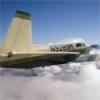My latest adventure, or my $3000 hamburger run, or new ways your engine can fail you.
-
Members Online
- Marc_B
- Pinecone
- crustymuffin
- 1980Mooney
- prillayo03
- theoriginalturk
- IvanP
- Sams
- Echo
- Hank
- Denis Mexted
- 00-Negative
- MarkC
- johnnyr172
- Aerodon
- BlueSky247
- Sherifferic
- MikeOH
- AndreiC
- Ragsf15e
- good2eat
- Will.iam
- LANCECASPER
- spistora
- PilotX
- camshaft
- Greg Ellis
- Sabremech
- YeloSub
- Matt M
- Sense
- teethdoc
- Scott Ashton
- M20F
- 47U
- peterl
- FADEC
- GDGR
- warren.huisman
- Dammit Bill
- Jetdriver
- Rick Junkin
- Andy95W
- blaine beaven
- jlunseth
- EricJ


Recommended Posts
Join the conversation
You can post now and register later. If you have an account, sign in now to post with your account.